Explore Kyoto: top things to do, where to stay and what to eat
Abundant heritage sites meet verdant nature and contemporary creativity in the city known as the cultural and historic heart of Japan.
Why go to Kyoto?
Japan's former imperial capital draws travellers from across the globe with its ancient temples, shrines and historic streets lined with teahouses.
Uncover Kyoto’s past while exploring storied districts and seeking out the city’s many UNESCO World Heritage Sites. Independent boutiques, exhibitions and an exciting food and drink scene are more reasons to visit. Those who appreciate spectacular scenery should head to the city’s most verdant areas for bamboo groves, forest and mountain views.
Kyoto's top neighbourhoods
Gion
Walk the flagstone streets lined with traditional wooden buildings that make up this historic entertainment district. Visitors mainly flock here to spot the elusive geisha, but make do with a trip to the many teahouses, restaurants and bars that encapsulate both modern and ancient Japan. See traditional dance performances at Minamiza kabuki theatre, stop by restaurants lining the Shirakawa Canal and seek out spiritual sites such as Yasaka Shrine.
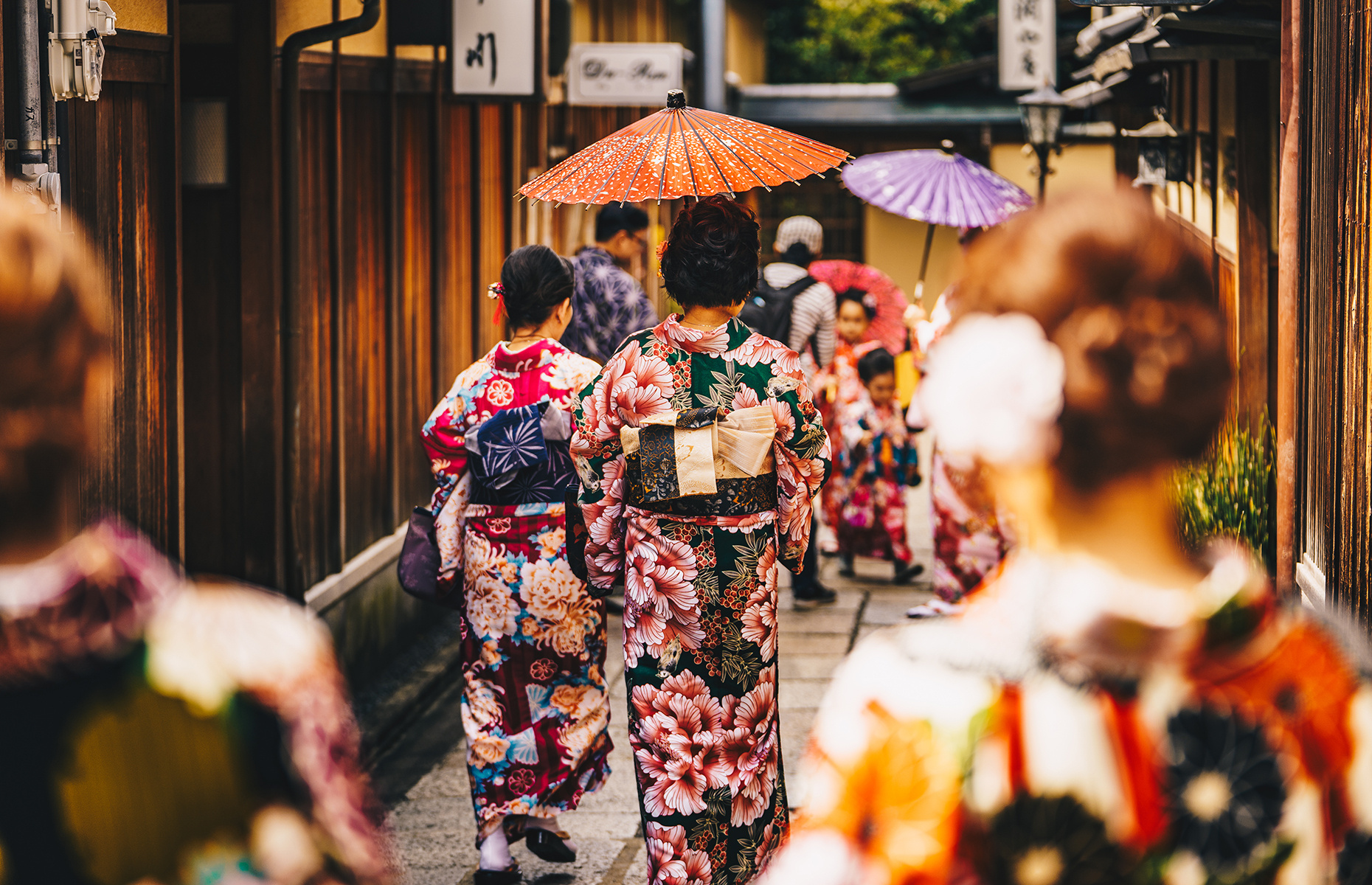
Higashiyama
Kiyomizu-dera, a part of the Historic Monuments of Ancient Kyoto UNESCO World Heritage Site, is among Kyoto’s most revered Buddhist temples and a site that’s appealingly tucked into the forested mountainside. This sprawling site, also known for the impressive vista of its viewing platform, is a part of Kyoto’s eastern Higashiyama district. Narrow streets running away from the temple, including the steep Sannenzaka shopping street, feature teahouses and traditional shops selling everything from pottery to wagashi (Japanese sweets).
Arashiyama
A wealth of temples, riverboat trips and bamboo forest make Arashiyama one of Kyoto’s key sightseeing areas. This western district tucked into the base of the Arashiyama mountains is centred around a main shopping street and its famous Togetsu-kyo bridge crossing the Katsura River. Make the most of your visit by walking through the famous Arashiyama Bamboo Grove, exploring temples such as Tenryu-ji and renting a rowing boat. The Sagano Scenic Railway takes you up into the mountains from here.
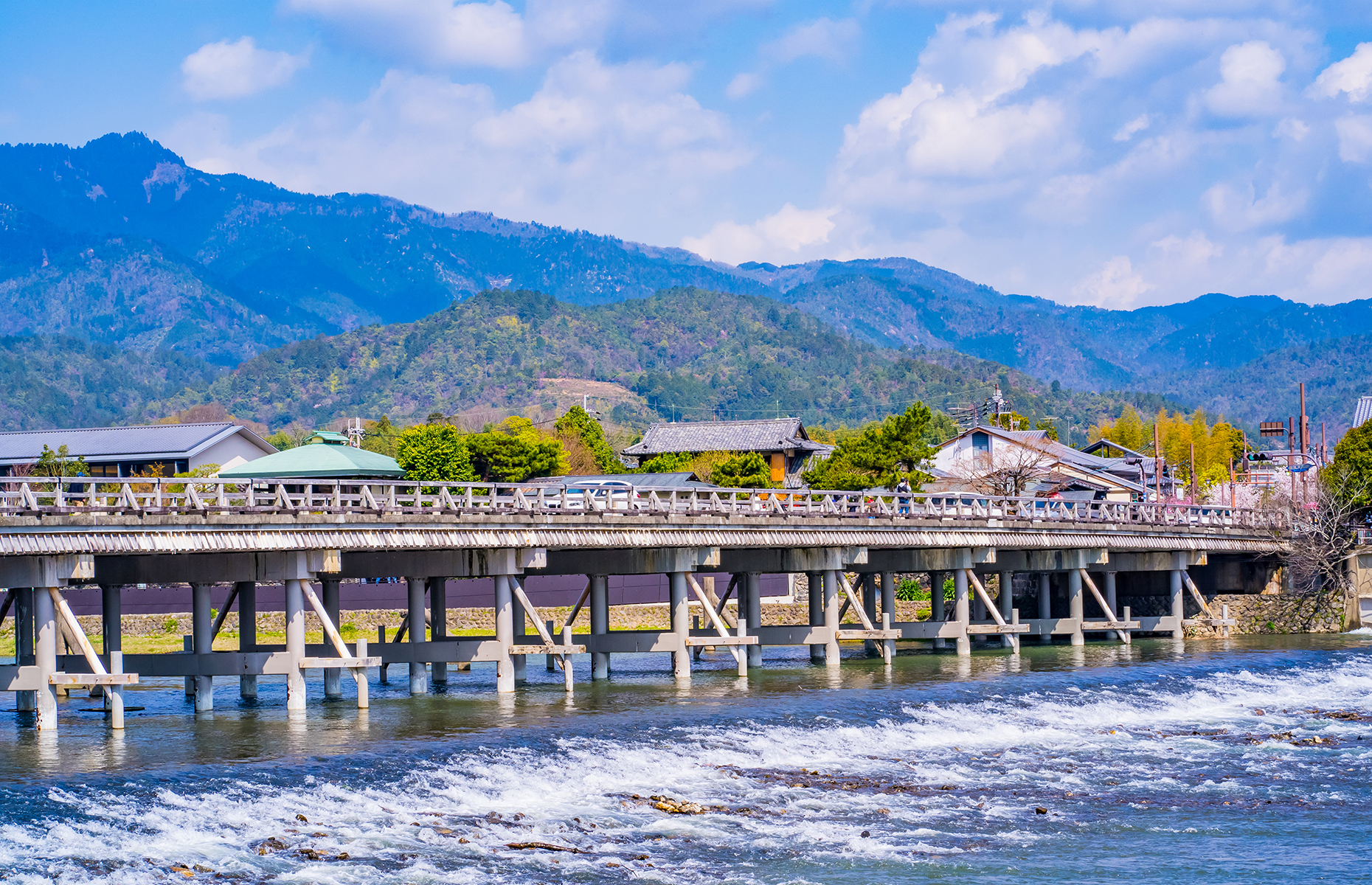
Fushimi
This area of southern Kyoto is best known for being home to one of Kyoto’s most famous visitor sites: the atmospheric Fushimi Inari Shrine, where walkways framed by thousands of vermilion torii gates lead you along a network of trails on the forested slopes of Mount Inari. From the main shrine buildings of this impressive complex, you can hike up to viewpoints on the mountainside. Fushimi is also a centre for sake production and as such has brewing sites like Gekkeikan Okura Sake Museum that you can visit.
READ MORE: 9 reasons to visit northern Japan
Must-have experiences in Kyoto
Temples and shrines
Several of Japan’s most important temples and shrines are found within Kyoto. Kiyomizu-dera (translating to Pure Water Temple) in Higashiyama is said to be the most visited temple in Kyoto, and understandably so with impressive structures including a main hall and three-storey pagoda, the Otowa no Taki waterfall and a scenic forest setting. Kinkakuji – also known as the Golden Pavilion – in Kita-ku is another of the city’s most popular temples. Its top two floors are entirely covered in gold leaf and it’s set overlooking a sprawling pond. Fushimi Inari and the Yasaka Shrine stand out among the city’s many shrines, while Ryoan-ji draws attention for being the site of Japan’s most famous Zen rock garden.
READ MORE: World's most beautiful temples
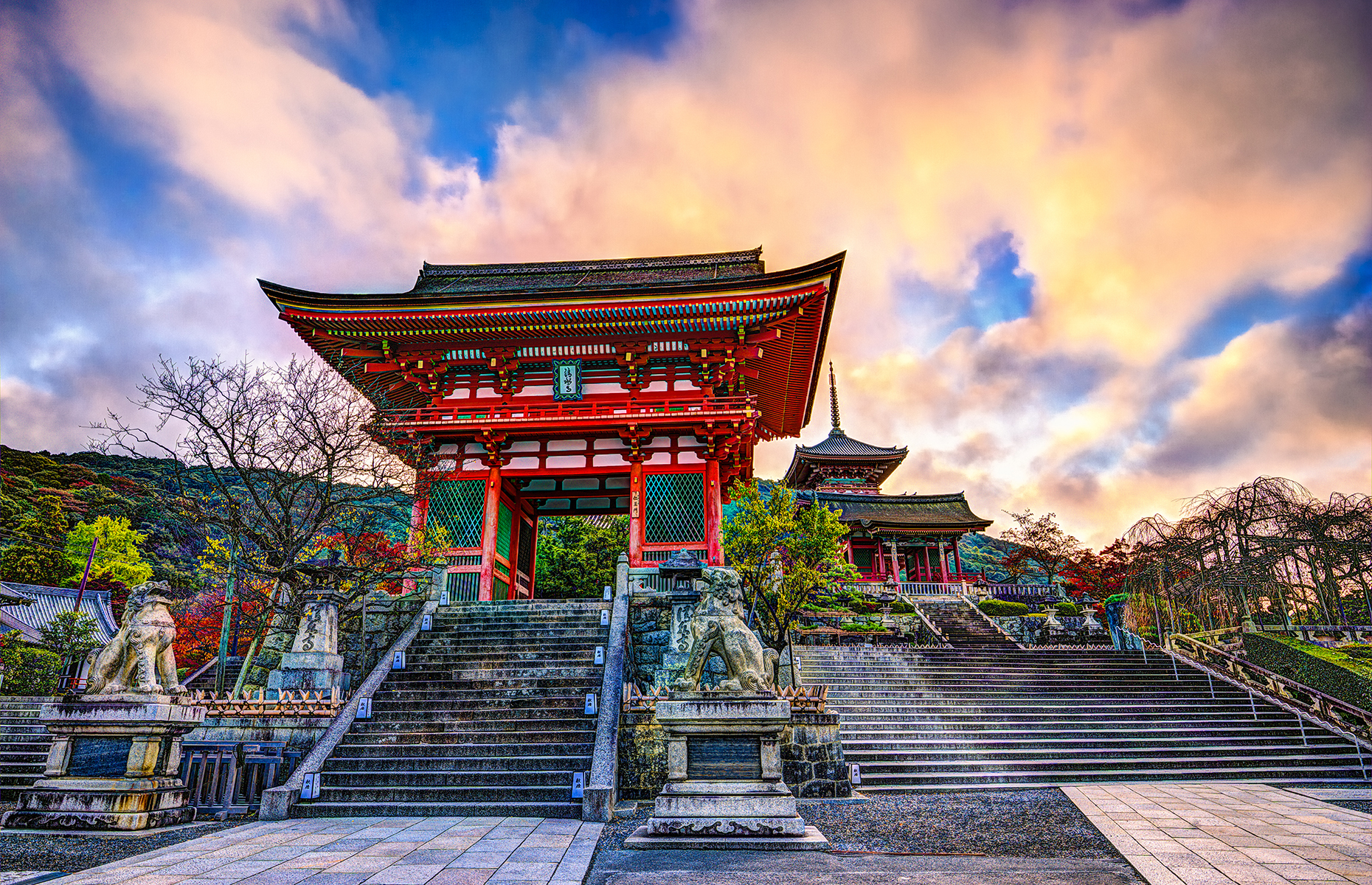
Cultural insight
Experience traditional Japanese culture first-hand in Kyoto by taking part in a wealth of cultural activities. These range from lessons in Japanese tea ceremony at teahouses such as Camellia in Higashiyama to calligraphy classes and making Japanese sweets with companies including Kyoto Maikoya. See Samurai swordplay at Samurai Kenbu Theater, watch the traditional Japanese dance-drama kabuki at Gion’s Minamiza theatre and catch a kyo-mai dance, performed by geisha and maiko (trainee geisha), at Gion Corner. For insight into contemporary culture, explore major galleries such as COHJU Contemporary Art and The National Museum of Modern Art, Kyoto.
The great outdoors
With its location in a vast geographical basin surrounded by forested mountains in three directions, Kyoto abounds with opportunities to get out into the great outdoors. Arashiyama, with its bamboo groves and a river flowing amid mountains and forest, is among the city’s best areas for exploring, along with Fushimi and its famous shrine’s torii-gate-flanked trails leading up the mountainside.
Other areas of natural beauty include Maruyama Park, the setting for Yasaka Shrine and a known site for cherry blossom in spring, as well as the Philosopher’s Walk under cherry trees lining a canal between Ginkaku-ji (Temple of the Silver Pavilion) and Eikan-do temple. To visit Kurama-dera, a temple in the far north that’s reached by train from central Kyoto, you need to hike or take a cable car up the mountain.
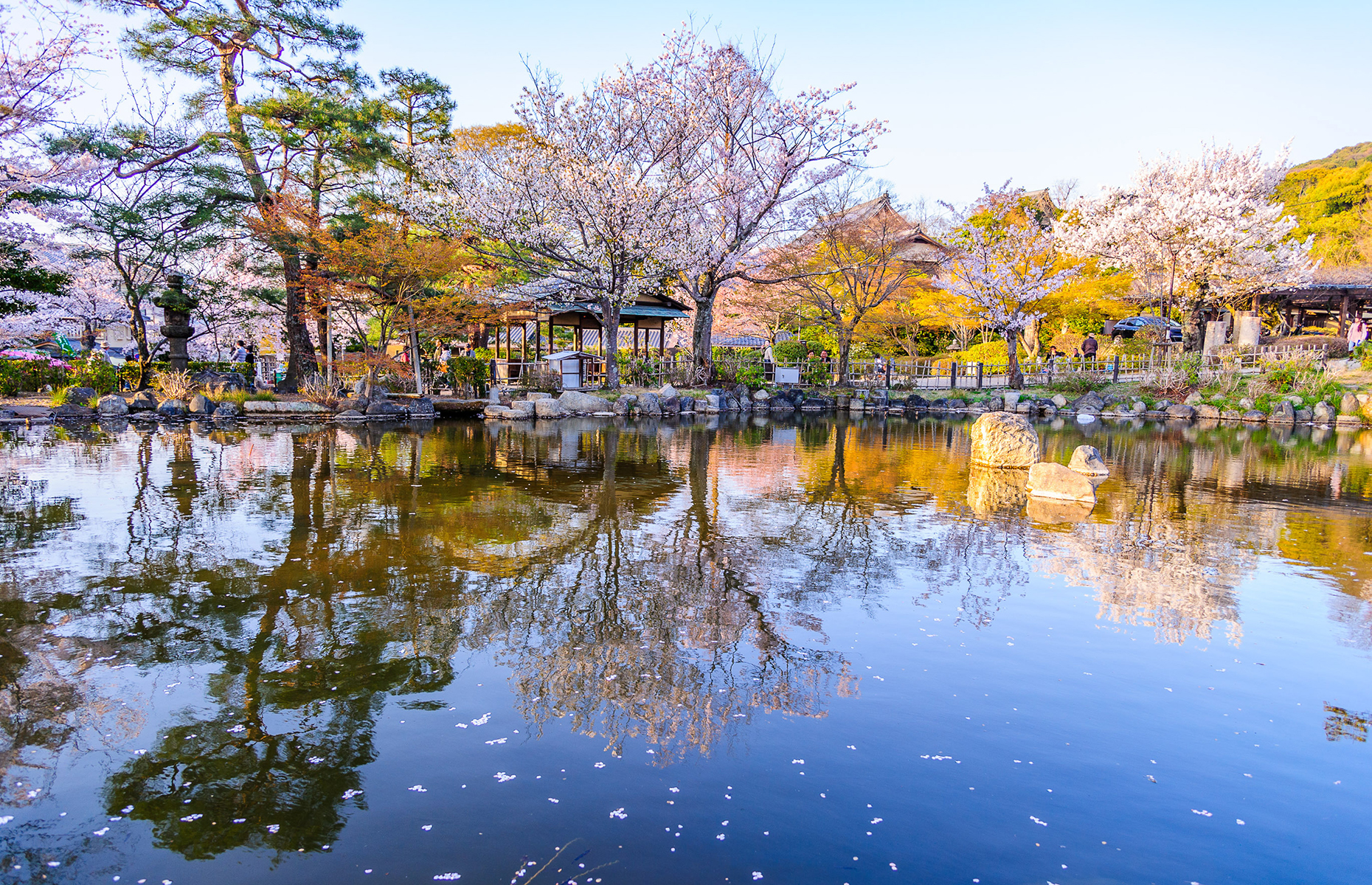
Food and drink
Each area of Japan has its distinct culinary identity. Kyoto's cuisine stands out for highlighting traditional Japanese ingredients, such as tofu and matcha, along with the tradition of serving multi-course kaiseki-style meals and a celebration of the skills of local artisans. Shojin ryori, the vegetable-based cuisine of Buddhist temples, is also said to have originated here.
For a taste of these local specialties, wander through Kyoto’s famous Nishiki Market, which has a history spanning several centuries, in the downtown Nakagyo district. For an unforgettable meal, dine at the three-Michelin-starred Hyotei kaiseki restaurant that’s been serving customers for more than 450 years. And try traditional Buddhist shojin ryori at a temple restaurant such as Shigetsu, which is set within the grounds of Tenryu-ji. Tea rooms serving authentic Japanese sweets are dotted across the city – Kagizen Yoshifusa in Gion is especially popular.
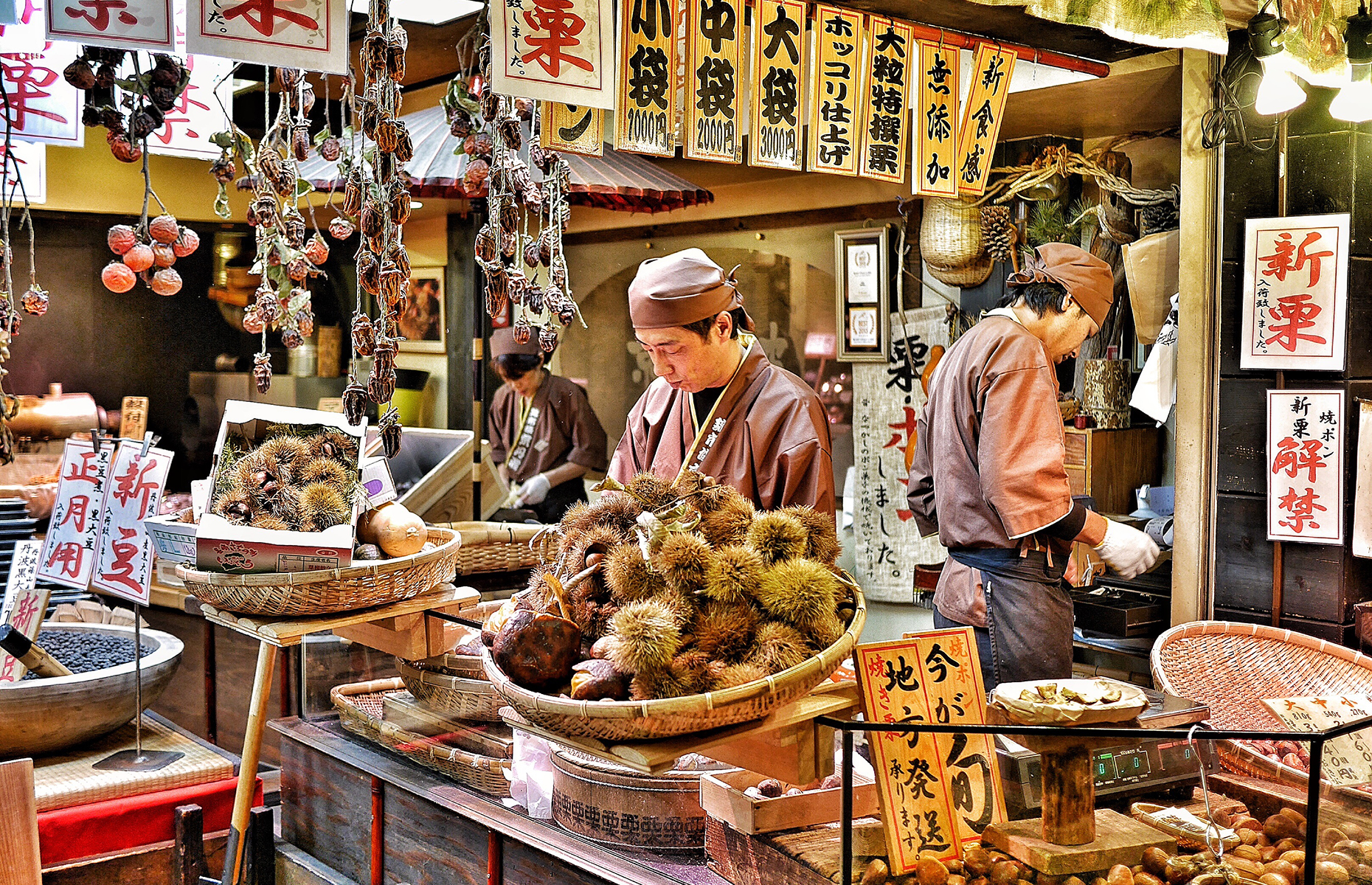
Where to stay in Kyoto
Pricey standout hotels in Kyoto include the serene Aman Kyoto, home to two upscale restaurants and its own onsen in a privileged forest setting just moments from Kinkaku-Ji, and the luxurious Sowaka transforming a 100-year-old former teahouse in Gion into a modern ryokan. Meanwhile, riverside Hoshinoya Kyoto in Arashiyama is housed in a collection of heritage buildings, updated for a tranquil modern feel.
Those on a tighter budget can stay at the art-filled Ace Hotel Kyoto near Nishiki Market, housed in a historic building that was renovated by the famous architect Kengo Kuma. Or check in to the recently-opened OMO5 Kyoto Gion fusing traditional and modern Japanese design in rooms also containing a living and dining space, as well as a small kitchen.
READ MORE: 40 unmissable experiences to enjoy in Japan

Getting there and around
After flying into either Tokyo or Osaka, Kyoto is easily reached via the country’s Shinkansen train system. The journey from Shin-Osaka Station to Kyoto takes only 15 minutes by bullet train, while the journey between Tokyo Station and Kyoto takes around 2h 15mins. Once you’re there, Kyoto is easy to get around on foot and by public transport. Kyoto bus and subway passes can be bought for unlimited use throughout the day from Kyoto City Bus and Subway Information Centre in front of JR Kyoto Station.
Comments
Do you want to comment on this article? You need to be signed in for this feature
